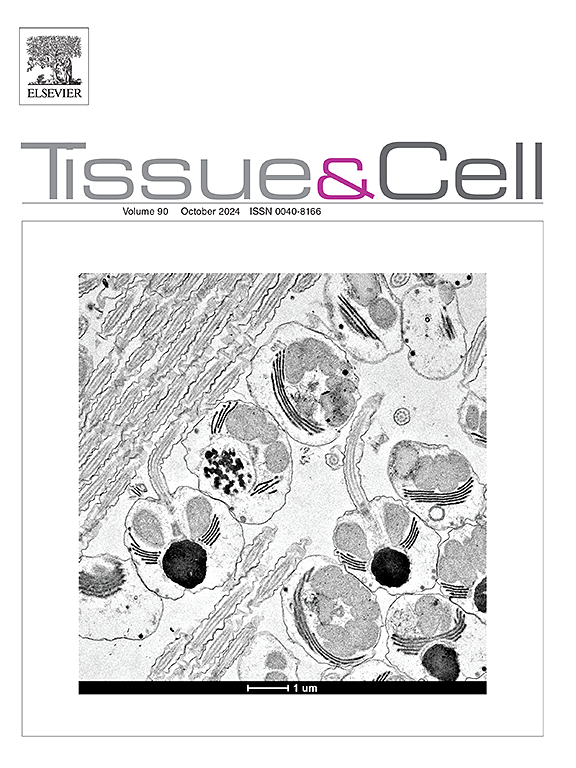皮肤炎症对富含生长因子的血浆生物特征的影响
摘要
富含生长因子(PRGF)的血浆具有抗炎作用,可用于皮肤病患者。然而,这一人群可能存在可溶性自身免疫成分,而且有关慢性皮肤炎症对 PRGF 生物活性特性影响的信息也很有限。为了确定 PRGF 成分的特征,研究人员从健康(H)供体和特应性皮炎(AD)、银屑病(PS)或硬皮病(LS)患者体内获取了 PRGF。为了减少炎症成分,对白细胞排除和热灭活(Immunosafe)进行了测试。测定了血液血清学参数、血小板功能、血块微观结构、蛋白质含量和生物活性。计算了主要血液学参数的平均值和 95 % 置信区间(mean[95 % CI]),如血小板(410×103/mm3[371-449])和白细胞含量(205×103/mm3[148-262])、血小板活化(静止:4.3 %[3.1-5.5] 和活化:97.4%[96.7-98.0])、血浆蛋白和形态蛋白的浓度,包括免疫球蛋白 A(210.7 mg/dL[191.8-229.6])、G(933.1 mg/dL[887.2-978.9])、E(783.5 mg/dL[54.4-1512.6])和 M(115.0 mg/dL[97.1-133.0])、补体蛋白(31.6 mg/mL[26.6-36.6])、C-反应蛋白(3.1 mg/L[2.0-4.1])、TGF-β1(35975.6 pg/mL[34221.3-37729.8])、纤连蛋白(146410.0 ng/mL[136518.3-156301.7])、PDGF-AB(13308.5 pg/mL[12401.0-14216.0])、CD40L(2389.3 pg/mL[1887.7-2890.8])、IL-4(0.12 pg/mL[0.07-0.18])、IL-13(35.4 pg/mL[21.0-49.7])、IL-1β(0.09 pg/mL[0.06-0.11])和 TNF-α (0.31 pg/mL[0.24-0.38]),以及细胞增殖(332.9ngDNA/mL[317.4-348.3])、存活率(135.6%[132.0-139.2])和迁移(103.8cells/mm2[98.3-109.3])。注意力缺失症捐献者的血浆中免疫球蛋白 E (IgE) 增高,而免疫安全疗法后,补体系统和自身抗体也明显降低。AD患者的血小板功能有所改变,但未发现微观结构上的差异。病理组的纤维粘连蛋白(AD/LS)和血小板衍生生长因子(PDGF-AB)(P)浓度降低。免疫安全疗法降低了分化簇 40 蛋白(CD40L)、白细胞介素 1β (IL-1β)和肿瘤坏死因子 α (TNF-α)的浓度。在 SP(LS)和 L-SP 样品(PS/AD)中,补充了病理患者(PS/AD)PRGF 的成纤维细胞的存活率降低,但 Immunosafe 可增加细胞增殖和迁移。总之,病理患者的 PRGF 含有自身免疫成分,但热灭活或白细胞排除可将局部副作用降至最低。Plasma rich in growth factors (PRGF) can be used over patients suffering from dermatoses due to its anti-inflammatory effect. However, this population group might present soluble autoimmune components and there is limited information about the effect of chronic skin inflammation on PRGF bioactive properties. With the aim of characterizing PRGF composition, PRGF from healthy (H) donors and patients with atopic dermatitis (AD), psoriasis (PS), or lichen sclerosus (LS) was obtained. In order to reduce the inflammatory component, leukocyte exclusion and heat-inactivation (Immunosafe) were tested. Haematological-serological parameters, platelet functionality, clot microstructure, protein content and bioactivity were determined. Mean values and 95 % confidence intervals (mean[95 % CI]) were computed for key haematological parameters, such as platelet (410×103/mm3[371–449]) and leukocyte content (205×103/mm3[148−262]), platelet activation (resting: 4.3 %[3.1–5.5] and activated: 97.4 %[96.7–98.0]), the concentration of plasma proteins and morphogens, including immunoglobulins A (210.7 mg/dL[191.8–229.6]), G (933.1 mg/dL[887.2–978.9]), E (783.5 mg/dL[54.4–1512.6]), and M (115.0 mg/dL[97.1–133.0]), Complement Protein (31.6 mg/mL[26.6–36.6]), C-Reactive protein (3.1 mg/L[2.0–4.1]), TGF-β1 (35975.6 pg/mL[34221.3–37729.8]), fibronectin (146410.0 ng/mL[136518.3–156301.7]), PDGF-AB (13308.5 pg/mL[12401.0–14216.0]), CD40L (2389.3 pg/mL[1887.7–2890.8]), IL-4 (0.12 pg/mL[0.07–0.18]), IL-13 (35.4 pg/mL[21.0–49.7]), IL-1β (0.09 pg/mL[0.06–0.11]) and TNF-α (0.31 pg/mL[0.24–0.38]), and also for cell proliferation (332.9ngDNA/mL[317.4–348.3]), viability (135.6 %[132.0–139.2]) and migration (103.8cells/mm2[98.3–109.3]). Plasma from AD donors presented increased Immunoglobulin E (IgE) that was significantly reduced after Immunosafe along with the complement system and autoantibodies. Platelet functionality was altered for AD, but no microstructure differences were identified. Pathological groups presented reduced concentration of fibronectin (AD/LS) and Platelet-Derived Growth Factor (PDGF-AB) (P). Immunosafe treatment reduced Cluster of Differentiation 40 Protein (CD40L), interleukin 1β (IL-1β), and Tumor Necrosis Factor α (TNF-α) concentrations. Fibroblasts supplemented with PRGF obtained from pathological patients (PS/AD) showed reduced viability but Immunosafe increased cell proliferation and migration in SP (LS) and L-SP samples (PS/AD). In conclusion, PRGF derived from pathological patients present autoimmune components, but heat-inactivation or leukocyte exclusion could minimize local side effects.

 求助内容:
求助内容: 应助结果提醒方式:
应助结果提醒方式:


